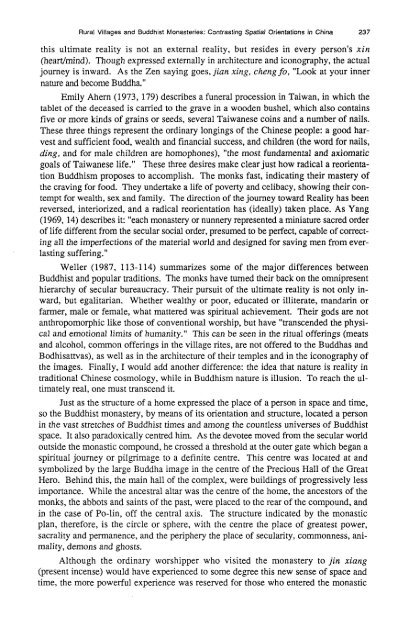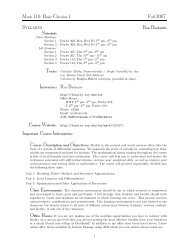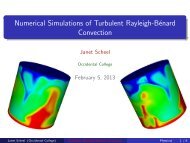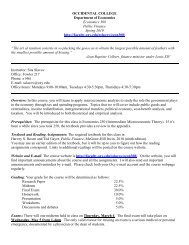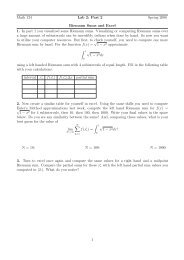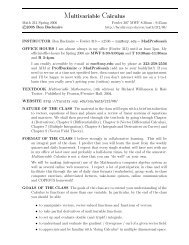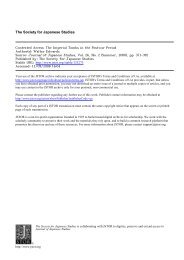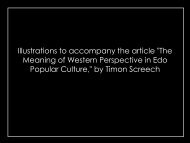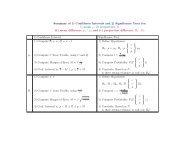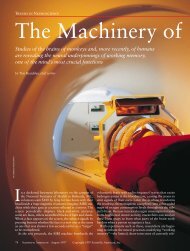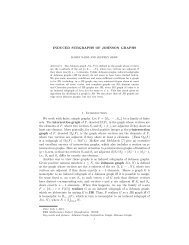Meyer-Villages and Buddhist Monasteries in China.pdf
Meyer-Villages and Buddhist Monasteries in China.pdf
Meyer-Villages and Buddhist Monasteries in China.pdf
You also want an ePaper? Increase the reach of your titles
YUMPU automatically turns print PDFs into web optimized ePapers that Google loves.
Rural <strong>Villages</strong> <strong>and</strong> <strong>Buddhist</strong> <strong>Monasteries</strong>: Contrast<strong>in</strong>g Spatial Orientations <strong>in</strong> Ch<strong>in</strong>a 237this ultimate reality is not an external reality, but resides <strong>in</strong> every person's x<strong>in</strong>(heart'm<strong>in</strong>d). Though expressed externally <strong>in</strong> architecture <strong>and</strong> iconography, the actualjourney is <strong>in</strong>ward. As the Zen say<strong>in</strong>g goes, jian x<strong>in</strong>g, cheng fo, "Look at your <strong>in</strong>nernature <strong>and</strong> become Buddha."Emily Ahern (1973, 179) describes a funeral procession <strong>in</strong> Taiwan, <strong>in</strong> which thetablet of the deceased is carried to the grave <strong>in</strong> a wooden bushel, which also conta<strong>in</strong>sfive or more k<strong>in</strong>ds of gra<strong>in</strong>s or seeds, several Taiwanese co<strong>in</strong>s <strong>and</strong> a number of nails.These three th<strong>in</strong>gs represent the ord<strong>in</strong>ary long<strong>in</strong>gs of the Ch<strong>in</strong>ese people: a good harvest<strong>and</strong> sufficient food, wealth <strong>and</strong> f<strong>in</strong>ancial success, <strong>and</strong> children (the word for nails,d<strong>in</strong>g, <strong>and</strong> for male children are homophones), "the most fundamental <strong>and</strong> axiomaticgoals of Taiwanese life." These three desires make clear just how radical a reorientationBuddhism proposes to accomplish. The monks fast, <strong>in</strong>dicat<strong>in</strong>g their mastery ofthe crav<strong>in</strong>g for food. They undertake a life of poverty <strong>and</strong> celibacy, show<strong>in</strong>g their contemptfor wealth, sex <strong>and</strong> family. The direction of the journey toward Reality has beenreversed, <strong>in</strong>teriorized, <strong>and</strong> a radical reorientation has (ideally) taken place. As Yang(1969, 14) describes it: "each monastery or nunnery represented a m<strong>in</strong>iature sacred orderof life different from the secular social order, presumed to be perfect, capable of correct<strong>in</strong>gall the imperfections of the material world <strong>and</strong> designed for sav<strong>in</strong>g men from everlast<strong>in</strong>gsuffer<strong>in</strong>g."Weller (1987, 113-1 14) summarizes some of the major differences between<strong>Buddhist</strong> <strong>and</strong> popular traditions. The monks have turned their back on the omnipresenthierarchy of secular bureaucracy. Their pursuit of the ultimate reality is not only <strong>in</strong>ward,but egalitarian. Whether wealthy or poor, educated or illiterate, m<strong>and</strong>ar<strong>in</strong> orfarmer, male or female, what mattered was spiritual achievement. Their gods are notanthropomorphic like those of conventional worship, but have "transcended the physical<strong>and</strong> emotional limits of humanity." This can be seen <strong>in</strong> the ritual offer<strong>in</strong>gs (meats<strong>and</strong> alcohol, common offer<strong>in</strong>gs <strong>in</strong> the village rites, are not offered to the Buddhas <strong>and</strong>Bodhisattvas), as well as <strong>in</strong> the architecture of their temples <strong>and</strong> <strong>in</strong> the iconography ofthe images. F<strong>in</strong>ally, I would add another difference: the idea that nature is reality <strong>in</strong>traditional Ch<strong>in</strong>ese cosmology, while <strong>in</strong> Buddhism nature is illusion. To reach the ultimatelyreal, one must transcend it.Just as the structure of a home expressed the place of a person <strong>in</strong> space <strong>and</strong> time,so the <strong>Buddhist</strong> monastery, by means of its orientation <strong>and</strong> structure, located a person<strong>in</strong> the vast stretches of <strong>Buddhist</strong> times <strong>and</strong> among the countless universes of <strong>Buddhist</strong>space. It also paradoxically centred him. As the devotee moved from the secular worldoutside the monastic compound, he crossed a threshold at the outer gate which began aspiritual journey or pilgrimage to a def<strong>in</strong>ite centre. This centre was located at <strong>and</strong>symbolized by the large Buddha image <strong>in</strong> the centre of the Precious Hall of the GreatHero. Beh<strong>in</strong>d this, the ma<strong>in</strong> hall of the complex, were build<strong>in</strong>gs of progressively lessimportance. While the ancestral altar was the centre of the home, the ancestors of themonks, the abbots <strong>and</strong> sa<strong>in</strong>ts of the past, were placed to the rear of the compound, <strong>and</strong><strong>in</strong> the case of Po-l<strong>in</strong>, off the central axis. The structure <strong>in</strong>dicated by the monasticplan, therefore, is the circle or sphere, with the centre the place of greatest power,sacrality <strong>and</strong> permanence, <strong>and</strong> the periphery the place of secularity, commonness, animality,demons <strong>and</strong> ghosts.Although the ord<strong>in</strong>ary worshipper who visited the monastery to j<strong>in</strong> xiang(present <strong>in</strong>cense) would have experienced to some degree this new sense of space <strong>and</strong>time, the more powerful experience was reserved for those who entered the monastic


